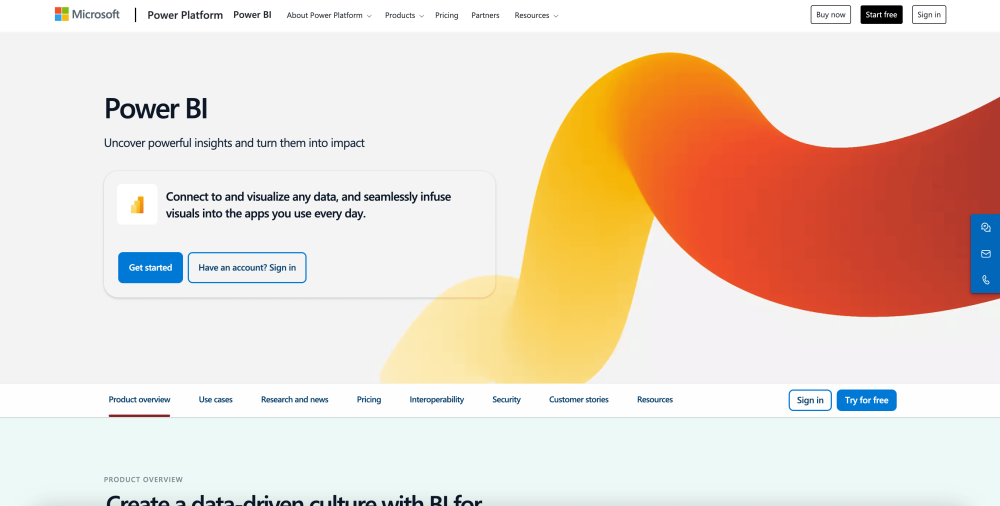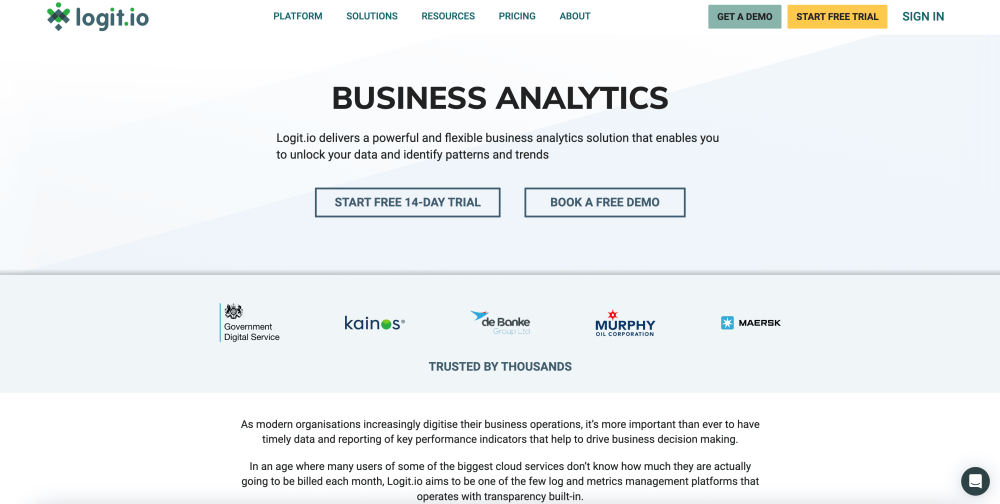Resources
6 min read
Business operations are now almost completely digitalized, this means with the appropriate tools timely data and reporting of key performance indicators can be utilized to assist in driving accurate business decision-making. With these tools, organizations can begin monitoring and analyzing extensive amounts of data that offer significant advantages to them.
The ability to analyze huge volumes of data empowers businesses to come up with insights through which they can do strategic planning, optimize their operations, and enhance customer experiences. Business analytics can be used to identify trends, predict future outcomes, and proactively respond to market changes. Moreover, the role of analytics is particularly important in the field of risk management. It will help find problems early on before they get out of hand.
In this article, we will define what business analytics is and its importance and list key metrics to monitor before outlining the leading business analytics tools you need to know about.
Contents
What is Business Analytics?
Business analytics employs data, statistical analysis, and predictive modeling techniques to uncover insights, make decisions based on data, and drive business growth. It encompasses a wide variety of methodologies and tools applied to analyzing past performance, understanding current trends, and forecasting future outcomes. Leveraging the latest analytics techniques in data mining, machine learning, and artificial intelligence, organizations can extract valuable insights from vast amounts of data to optimize operations, improve efficiency, and identify new opportunities.
The Importance of Business Analytics
Business analytics forms a cornerstone of the modern-day data-driven business environment. Firstly, it allows the organization to gain deep, valuable insights from data analysis that can be acted upon at all levels. Leveraging these insights from data will, therefore, inform strategic choices that drive growth, optimize operations, and mitigate risks.
Also, with increasing data from all possible sources, businesses can better understand their customers' behavior, preferences, and needs. Business analytics enables organizations to segment their customer base, identify valuable insights, and tailor products, services, and marketing efforts to meet individual customer requirements. This personal approach will enhance customer satisfaction, help retain customers, and boost revenues.
Moreover, business analytics is pivotal in risk management and regulatory compliance. With the use of historical analysis in identifying potential risks, organizations will be in a position to proactively reduce threats while meeting the regulatory compliance threshold and avoiding expensive penalties. Besides, predictive analytics puts businesses in a position to forecast future risks and develop contingency plans to minimize impact.
Lastly, business analytics brings the organization different KPIs and metrics to gauge the effectiveness of its strategies and initiatives. Businesses can keep up with performance metrics in real-time, recognize where they need to improve, adjust tactics as necessary, and drive innovation and growth continuously. This data-driven approach fosters accountability, transparency, and continuous improvement within the organization.
Business Analytics: Key Metrics
Revenue and Sales Metrics
Some fundamental business success metrics are based on sales revenue, growth in sales revenue, and average customer revenue. Keeping track of these metrics allows organizations to gauge sales performance, detect trends in revenue, and understand the results of sales and marketing strategies. In addition, metrics such as CLV (customer lifetime value) and CAC (customer acquisition cost) allow an organization to be aware of the profitability of customer relationships, and the efficiency of the sales and marketing effort.
Operational Efficiency Metrics
Operational efficiency metrics include inventory turnover ratio, asset turnover ratio, and DSO. These measures define the overall business processes and resource utilization effectiveness. Monitoring these metrics helps organizations identify inefficiencies, streamline operations, and optimize resource allocation to improve productivity and reduce costs. It is from such operational efficiency metrics that organizations can get a good understanding of ways to automate processes, reduce waste, and enhance overall operational performance.
Employee Performance Metrics
Employee performance metrics measure the effectiveness of human resource management practices and employee engagement initiatives. They include employee turnover rate, employee satisfaction score, and productivity metrics. Tracking these metrics will help the organization realize a problem in workforce management, and find a solution to the issue of employee satisfaction, retention, and overall organization performance. Employee performance metrics will enable organizations to track, attract, retain, and develop top talent to improve employee engagement and productivity.
Profitability Metrics
Profitability metrics, such as gross profit margin, operating profit margin, and net profit margin, measure the effectiveness of business activities and overall business health. These metrics let organizations keep track of their competency in deriving profitable sales, monitoring and thus keeping costs in check. These metrics, therefore, identify those areas in which either cost reductions or optimization of revenues have to be considered so that overall profitability can be improved.
Business Analytics: Use Cases
Business analytics has extensive use cases across industries and functional areas within organizations. To begin with, business analytics helps an organization divide its customer base into distinct segments based on their demographics, behavior, purchasing patterns, and other features. With this understanding of these segments, companies can tailor marketing campaigns, products, and services for better preference satisfaction among different customer segments. This approach, when targeted, greatly increases customer engagement, conversion rates, and overall sales.
Another use case for business analytics is sales forecasting which is fundamental for inventory management, budgeting, and strategic planning. Using business analytics historical sales data, market trends, and predictive modeling capabilities, sales in the future can be projected with a great level of accuracy. Businesses will be positioned to make the most efficient inventory levels, plan on resource allocation, and look forward to planning the highest peak demand periods, providing satisfaction to customers, and reducing costs.
Lastly, most human resources departments apply business analytics to employee recruitment, retention, and performance. By analyzing data on employee turnover, employee satisfaction, productivity, and training effectiveness, a company can work out what factors relate to employee engagement and retention. It is an aid in making better, more targeted HR strategies, better talent management, and a more productive and satisfied workforce.
The Best Business Analytics Tools
Microsoft Power BI

Microsoft Power BI is a data visualization tool for business analytics. The tool enables you to turn your data into visuals with advanced data-analysis tools, AI capabilities, and a user-friendly report-creation tool. Power BI from Microsoft helps you make better decisions by infusing insights into the apps you use every day, like those in Microsoft 365. As well as this, the tool enables you to embed and share reports in your other Microsoft services, including Teams, PowerPoint, Excel, and Power Platform.
Logit.io

With Logit.io’s dedicated business analytics solution, you can gather and centralize business process data into a unified platform, enhancing collaboration among your business analytics teams. As well as this, the solution allows you to utilize powerful visualizations and dashboards to provide visibility into end-to-end business processes, enabling you to effectively leverage your data.
If you’re interested in finding out more about Logit.io’s extensive Business Analytics solution then feel free to contact us or begin exploring the platform for yourself with a 14-day free trial.
Zoho Analytics

Zoho Analytics offers a Business Analytics solution that enables you to connect to a wide variety of sources like files and feeds, popular business apps, cloud, and on-premise databases to quickly begin deriving insights from your data. The solution also offers AI backed featured which enables you to generate automated insights, predict future trends, and setup smart alerts, as well as other features.
If you've enjoyed this article why not read The Top 30 Business Intelligence Tools or Compliance in Business next?
